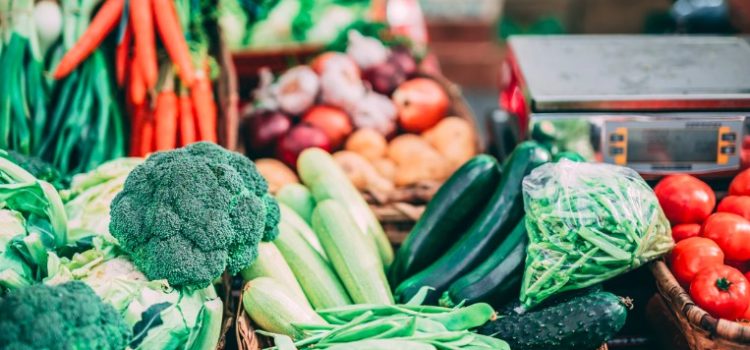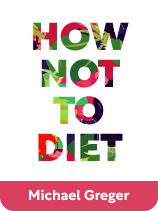

This article is an excerpt from the Shortform book guide to "How Not to Diet" by Michael Greger. Shortform has the world's best summaries and analyses of books you should be reading.
Like this article? Sign up for a free trial here.
What are the benefits of a high-fiber diet? What foods are high in fiber?
Fibrous foods reduce both the number of calories your body stores as fat and the number of calories you consume. In How Not to Diet, Michael Greger goes into more detail about the benefits you could gain from having a high-fiber diet.
Keep reading to learn more about the benefits of high-fiber diets.
1. Fiber Reduces the Number of Calories Your Body Stores as Fat
According to Greger, one of the benefits of a high-fiber diet is that fibrous foods reduce the number of calories your body stores as fat. This is because fibrous plants have tough outer layers that are difficult to digest. This means that your body can’t break down these foods and digest all the calories before you excrete them.
Further, fibrous foods reduce the calories you extract from accompanying foods: As fiber passes through your body, it mixes with and encases other foods in your digestive tract. Because this casing is indigestible, it traps the calories in these other foods and prevents them from being extracted by your body before you excrete them.
For example, people who eat whole wheat pasta (high in fiber) with a cream sauce would excrete more calories from the cream sauce than those who pair the sauce with white pasta (low in fiber). This is because the fiber in the whole wheat pasta envelops the calories in the sauce and prevents them from being digested by your body.
The Difference Between Soluble Fiber and Insoluble Fiber
Research expands on how fibrous foods help prevent weight gain by explaining that most plants contain two types of fiber: soluble and insoluble. Though both types are indigestible, they help maintain a healthy weight in different ways.
Soluble fiber (two calories per gram) dissolves in bodily fluids to form a thick gelatinous substance that passes through your digestive tract. As Greger says, it encases other foods and prevents your body from extracting calories from them. Additionally, it covers fat and cholesterol—which means you excrete these substances instead of absorbing them. Sources of soluble fiber include apples, barley, beans, carrots, citrus fruits, oats, and peas.
Insoluble fiber (zero calories per gram) doesn’t dissolve in fluids. Instead, it absorbs fluids and sticks to other foods, forming bulkier stools that help keep you regular. Sources of insoluble fiber include beans, nuts, wheat bran, whole wheat flour, cauliflower, green beans, potatoes, and berries.
The recommended daily intake of fiber for people under the age of 50 is 25 grams for women and 38 grams for men, a quarter of which should come from soluble fiber.
2. Fiber Reduces the Number of Calories You Consume
Greger claims that another benefit of a high-fiber diet is that it also reduces the number of calories you consume in the first place. This is due to two reasons:
1) They require more chewing: They take longer to eat than processed foods. According to Greger, the more you chew, taste, and keep food in your mouth, the more satiated you feel, even if the food’s low in calories. This feeling satisfies your cravings for high-calorie foods and inhibits the tendency to reach for additional helpings.
(Shortform note: Multiple studies verify that chewing more leads to eating less during a particular meal. However, while Greger focuses on how chewing food during a meal reduces the amount you eat at that meal, studies reveal that chewing something tasteless, such as flavorless gum, before meals reduces appetite and prevents compulsive eating. This is because chewing tricks your brain into believing that you’re consuming real food and satiating your appetite. Because you believe that you’re already consuming food and filling up, you pay less attention to real food—which means you don’t crave foods that lead to compulsive eating.)
2) They require more effort to digest: As we’ve discussed, food remains in your stomach until the digestive process is complete. Greger explains that, since plant-based food takes a long time to digest, it makes you feel satiated for longer. This is both because your stomach is full for a longer period of time and because, during this time, it releases a steady supply of nutrients into your bloodstream.
(Shortform note: Fiber has long been known to satiate appetite and keep us full for longer. While previous research put this down solely to Greger’s two reasons—that fibrous foods take longer to chew and digest—recent studies reveal that there’s more going on beneath the surface. Digesting fiber releases an anti-appetite molecule (acetate) into the bloodstream, which travels to and accumulates in the hypothalamus—a part of the brain that regulates hunger. Once there, it spurs chemical reactions that favor appetite suppression.)

———End of Preview———
Like what you just read? Read the rest of the world's best book summary and analysis of Michael Greger's "How Not to Diet" at Shortform.
Here's what you'll find in our full How Not to Diet summary:
- How eating processed foods and animal products leads to weight gain
- Why eating plant-based foods reduces the calories your body stores as fat
- What dietary changes will help you shed excess pounds and keep them off






